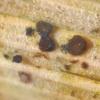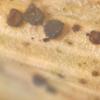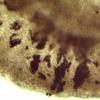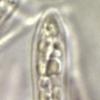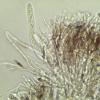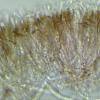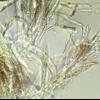
11-01-2026 20:35
Hello.A very tiny pyrenomycete sprouting sparsely

09-01-2026 17:41
Arnold BüschlenHallo, F. dilatata wird von vielen Bryoparasiten

10-01-2026 20:00
Tom SchrierHi all,We found picnidia on Protoparmeliopsis mur

07-01-2026 22:22
 Danny Newman
Danny Newman
Tatraea sp. on indet. hardwood The Swag, Great Sm

10-01-2026 01:18
 Danny Newman
Danny Newman
cf. Neovaginatispora fuckelii on indet. shrub Pre

07-01-2026 10:24
 Danny Newman
Danny Newman
Pezicula sp. on indet. hardwood Appalachian Highl

09-01-2026 10:08
 Blasco Rafael
Blasco Rafael
Hola, en el mismo habitat que la anteriorRetamaDia

08-01-2026 21:22
 Blasco Rafael
Blasco Rafael
Hola, He recogido esta muestra de Orbilia sobre Re

07-01-2026 17:29
 Marc Detollenaere
Marc Detollenaere
Dear Forum,On a barkless Populus I found some smal

10-11-2021 17:33
 Riet van Oosten
Riet van Oosten
Add-on topic http://www.ascofrance.com/forum/7059
Micropeziza sp. on Phalaris arundinacea
Chris Yeates,
30-06-2013 15:41
 Bonjour tous
Bonjour touscollected recently on Phalaris lying in a wet place with Polytrichum moss nearby. This is surely a Micropeziza; looking at Zotto's images I am uncertain of which Micropeziza it can be assigned to: M. karstenii or cornea - I suspect some confusion over types? but I may well be wrong. Asci were IKI BB, and croziers were present. The paraphyses varied from ones with greenish yellow apical contents - like those in HB5565 (see the last attached image here, right side), to ones in which a much longer apical portion (almost half) contained a rich amber pigment (see the sixth image).
I am keeping the material damp as, annoyingly, I am having difficulties finding ripe spores, although the material is abundant. NB All the images are of living material mounted in water.
Cordialement
Chris
Hans-Otto Baral,
30-06-2013 16:04

Re : Micropeziza sp. on Phalaris arundinacea
Hi Chris
wonderful that you find this species as we are just dealing with this genus. The exudate on the exterior is abundant as in Crustomollisia. I do not find a difference between M. cornea (on sedges) and karstenii (on Poaceae) and even M. poae.
A correction: Tose paraphyses with rich amber pigment are dead ones. Also the ascus and the spores within are dead, regrettably.
Zotto
wonderful that you find this species as we are just dealing with this genus. The exudate on the exterior is abundant as in Crustomollisia. I do not find a difference between M. cornea (on sedges) and karstenii (on Poaceae) and even M. poae.
A correction: Tose paraphyses with rich amber pigment are dead ones. Also the ascus and the spores within are dead, regrettably.
Zotto
Chris Yeates,
30-06-2013 17:01

Re : Micropeziza sp. on Phalaris arundinacea
Many thanks for the fast response Zotto; yes I was amused when I looked at this "Crustomollisia-like" discomycete under the microscope;-)!
We had several dry weeks here and then a period of heavy rain, so these appeared quite fresh, but were clearly not. I visit the site regularly so I should be able to get fresher apothecia.
nochmals vielen Dank
Chris
We had several dry weeks here and then a period of heavy rain, so these appeared quite fresh, but were clearly not. I visit the site regularly so I should be able to get fresher apothecia.
nochmals vielen Dank
Chris
